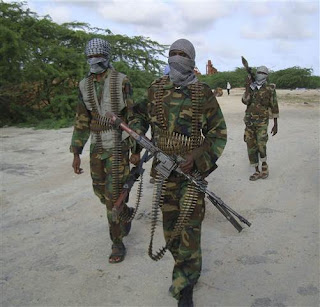Ministers in
Africa started after the Portuguese sailors gradually found and set up
settlements along the western shoreline of Africa. The first evangelists were a
gathering of the Franciscan monks known as Capuchins. It is assessed that this
gathering sanctified through water an expected six hundred thousand Africans. A
significant part of the eastern shoreline of Africa, however, was prospering
with teacher work. There were an expected twenty mission stations in the field.
The Africans trusted that by tolerating Christianity that they would likewise
be acknowledged into the Portuguese provincial control, however regularly the
Africans were the ones attempting to make the Portuguese and the preachers get
along.1
Islam entered the
Somali coast in the years that followed the hijra; “the Prophet Muhammad’s
migration (622 ce) from Mecca
to Medina
in order to escape persecution. The date represents the starting point of the
Muslim era.”2 The
principal agents of Islamization were Arab immigrants, scholars and traders, and
later, indigenous teachers. As in Ethiopia, its expansion led to the emergence
of small coastal city-states, such as Zeila and Mogadishu. However, the
carriers of the new faith preached and lived among predominantly nomadic
communities and within a society in which clan or tribal leaders controlled the
scarce resources of vast expanses of territory.3 Christianity is a
minority religion in Muslim Somalia. The official number of those practicing
Christianity is just around 1,000 among the nation's aggregate populace of more
than eight million occupants. The genuine number of Christian professionals in
Somalia is obscure because of the marvel of Crypto-Christianity among ethnic
Somali Muslim believers to Christianity. The genuine name of the private
section of Somali Christian specialists, notwithstanding, is obscure. These are
crypto-Christians of Somali Muslim backgrounds who have changed over to
Christianity clandestinely. Religious abuse of these unofficial Christians has
been predominant in Nairobi. Underground Somali holy places can't worship transparently
as leaving Islam is a wrongdoing deserving of death in Somalia.
 |
Sean Devereux
|
Sean Devereux was
an English Salesian preacher killed in Kismayo, Somalia in 1993 while working
for UNICEF. He has since turned into an outstanding good example for the guide
working employment, especially among Christians. Prior to his death, He then
started working with UNICEF in Somalia where he was doled out to arrange help
for the starving, especially kids, in Kismayo, the fortification of one of the
numerous warlords. After just four months in the nation, Devereux was lethally
shot in the back of the head by a single employed shooter while strolling close
to the UNICEF compound on Saturday, 2 January 1993.4 Italian
Catholic nun Sister Leonella Sgorbati, Somalia's Mother Teresa, who had lived
in Somalia for forty years, giving medical aid to the poor. In 2006, she was
shot in the back outside a Somalia hospital. In 2014, near the capital city of
Mogadishu, Abdishakur Yusuf, the leader of five underground Protestant
congregations, was shot in the head five times by extremists.5
2.
Britannica Academic, s.v. "Hijrah," Accessed February 26,
2017, http://academic.eb.com.ezproxy.liberty.edu/levels/collegiate/article/Hijrah/39809.
3. Ahmed,
Hussein. "Reflections on Historical and Contemporary Islam in Ethiopia and
Somalia: A Comparative and Contrastive Overview." Journal of Ethiopian
Studies 40, no. 1/2 (2007): 261-76. http://www.jstor.org/stable/41988230.
5. Shea, Nina. "BARBARISM 2014:
On Religious Cleansing by Islamists." World Affairs 177, no. 4 (2014): 34-46. http://www.jstor.org/stable/43556669.















